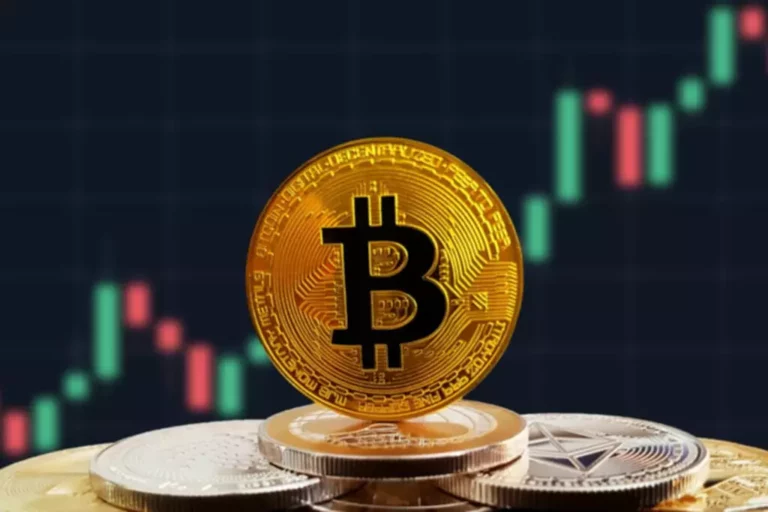Content
Custom-built trading software, tailored to the firm’s specific strategies and needs, is often developed in-house. Continuous testing and optimization of this software are necessary to ensure its reliability and performance. High-Frequency Trading relies heavily on advanced technology and sophisticated tools to execute trades at lightning speed. The success of HFT firms is often determined by their technological edge. Here, we will explore the key technologies and tools that are integral to HFT https://www.xcritical.com/ trading.
What are the essential tools needed for scalping?
By processing vast amounts of market data and reacting swiftly to news and events, HFT algorithms help prices reflect relevant information accurately and in a timely manner. Scalping is a strategy where HFT firms aim to profit from small price discrepancies in the market. The algorithms quickly enter and exit trades, taking advantage Know your customer (KYC) of these small price differences, often capturing just a fraction of a cent per trade. While the profit per trade may be small, the high frequency at which these trades are executed can result in significant cumulative profits. The exact number depends on market conditions, trading strategy, and individual preferences.
Frequently Asked Questions About the HFT Trading Strategy

Microwave transmission offers a speed advantage due to less signal degradation than light traveling through fiber optics. Critics argue that HFT can exacerbate price fluctuations, particularly in turbulent or declining markets. The efficiency of HFT has been questioned, as what is hft it generates a significant amount of quote traffic relative to the value of trade transactions. Gaining these skills requires a mix of advanced schooling (an M.A. and Ph.D. in a quantitative discipline) and experience through internships and industry experience.
What is the minimum capital required for high-frequency trading?

Regular reporting, capital requirements, trading records, and other regulations must be followed to avoid hefty fines. Compliance staff help monitor trading systems and ensure regulatory policies are maintained as the firm scales up. In the 2010s, HFT faced increased scrutiny and criticism from regulators and the public.
Piotroski F-Score Strategy: Backtest and Performance Analysis
If you develop high-frequency trading algorithms for a firm, you can expect to earn $133,000 to $135,000 your first year, according to the site. And if you’re one of the best, you could easily see $400,000 to $1 million a year, according to efinancialcareers.com. Hedge funds and high-frequency trading firms hire people with Ph.D.s in math, physics, computer science, or engineering. According to efinancialcareers.com, they won’t hire someone who only has a bachelor’s degree. This gives the program many opportunities to capitalize on the changes.
HFT systems process this information faster than human traders and can execute trades within milliseconds, profiting from the resulting price changes. High-frequency trading, or HFT, is a type of algorithmic trading characterized by high speeds and turnover rates. It involves the use of sophisticated algorithms and powerful computers to rapidly execute trades. The goal is to take advantage of minuscule price discrepancies and market inefficiencies that occur within fractions of a second. High-Frequency Trading (HFT) represents a segment of the financial markets that relies on advanced algorithms and powerful computers to execute a large number of orders at extremely high speeds.
The quote and volume information is public, so this strategy is legal. Advances in technology have helped many parts of the financial industry evolve, including the trading world. Computers and algorithms have made it easier to locate opportunities and make trading faster. High-frequency trading allows major trading entities to execute big orders very quickly.
She has over 10 years of experience building content for FinTech and SaaS B2B brands. These orders are then routed to the appropriate exchange for execution. Sophisticated algorithms determine the most efficient route to send the order to the exchange, taking into account factors like latency and potential execution costs.
High-Frequency Trading plays a pivotal role in modern financial markets. Its significance can be observed through various dimensions, including liquidity provision, market efficiency, and price discovery. Low latency arbitrage and market-making in liquid instruments like index ETFs remain lucrative. HFT is also expected to expand across more asset classes and into new markets.
- Forex.com offers its own proprietary platform as well as MT4, ensuring that traders can use the platform that best suits their needs.
- Finally, Table 1 outlines the 32 scenarios considered in the study, each assigned a unique ID for ease of reference.
- A random delay in the processing of orders by certain milliseconds counteracts some HFT Strategies which supposedly tends to create an environment of the technology arms race and the winner-takes-all.
- While these are all very different, they still have many things in common.
- Apart from speed, HFT is also characterized by high turnover rates and order-to-trade ratios.
- It also includes direct data feed connections that transmit market data directly from the exchange rather than through third-party aggregators, reducing latency.
The adaptability of RL to the dynamic and often volatile nature of financial markets underscores its potential, as it learns optimal actions through trial and error within complex environments. However, the effectiveness of RL-based strategies heavily depends on the quality and relevance of features extracted from market data. Incorporating TDA-derived features could contribute to a richer, more informative representation of market dynamics, thereby enhancing the adaptability of RL algorithms to variable market conditions.
However, one limitation is that it can exacerbate volatility during periods of high market stress due to the massive order flows generated by HFT algorithms. Understanding both the origins and strategies employed in HFT helps market participants better navigate today’s highly electronic financial system. Despite its complex architecture, N-BEATS is relatively simple to implement and use, requiring minimal pre-processing or feature engineering. It is scalable for efficiently handling large datasets, making it suitable for real-time forecasting scenarios. Statistical arbitrage is a strategy employed in high-frequency trading to identify price differences among different securities traded on various exchanges or markets.
Some also believe high-frequency traders help keep prices stable and reduce volatility. If there’s no liquidity, stocks can get stuck with large spreads for a while. New technologies and regulatory changes are continually reshaping the industry. As we look to the future, it’s clear that machine learning and artificial intelligence will play an even bigger role. These tools can help traders make more informed decisions and execute trades even faster. The main benefit of high-frequency trading is the speed and ease with which transactions can be executed.
This strategy combines the speed of HFT with advanced statistical models. Statistical arbitrage seeks to identify short-term price patterns or anomalies in asset prices and capitalizes on them before they correct. HFT algorithms analyze vast amounts of data, finding relationships between securities that deviate from historical patterns and exploiting them for quick profits. In this method, speed is everything, as these small deviations correct themselves within seconds. HFT firms often rely on event-driven strategies, where the algorithms monitor news or data releases and immediately trade based on this new information. For example, announcements about earnings, economic reports, or geopolitical events can cause price volatility.
It requires resources, knowledge, and capital that are best left to institutional investors and traders. HFT requires perfection in everything you do – from backtesting, quotes, and systems. Despite concerns raised by some market participants about the unfairness of HFT, the SEC has defended the practice because it increases liquidity. That’s because HFT firms are continuously placing buy and sell orders, which can make it easier for other traders to execute their trades quickly and at more stable prices. This should lead to narrower bid-ask spreads and more efficient markets. Other sources of income for HFT firms are the fees they receive for providing liquidity for electronic communications networks and some exchanges.
Smaller investors may feel disadvantaged due to limited access to the same level of technology and market data. When talking about high frequency trading 2021 strategies, there are quite a few of them that should be discussed. In the financial markets, pairs trade is a very popular trading strategy that envisages matching a long position with a short position in two assets with a high correlation. Introduced in the 80s, this trading strategy largely focuses on statistical and technical analysis to find potential market-neutral profits. HFT thrives on arbitrage opportunities, where price discrepancies arise between related assets or markets.

